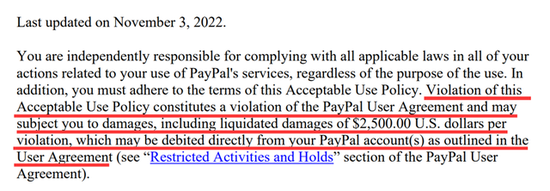your current location is:Home > Finance > depthHomedepth
chip folding
 Source: Figure Worm
Source: Figure WormThe semiconductor market continues to differentiate.
"This chip is difficult to order and arrive. I contacted the original factory and couldn't find it. Can you help me find it?" At an electronics exhibition in Shenzhen recently, I heard such inquiries from time to time, and I felt anxious about the lack of a chip. Instantly filled with conversation. If you travel between the booths again, the news of the partial surplus of consumer electronic chips is always heard, and the price drop of 80% to 90% is even more astounding.
"
The skyrocketing and slumping lack of cores, oversupply and undersupply, blue oceans and bubbles, the sense of contradiction is intertwined in the semiconductor market, and it also reflects the complexity of the chip supply chain and trading market.
The price change brings the midstream chip distribution system to the public eye, especially the parabolic spot price of analog chips and MCUs, which has been hotly debated. "Last year, some categories soared from tens of yuan to thousands of yuan, but some people still want them. Even if the chips are down by more than 90%, they cannot be sold,” a person in charge of an electronic components trading platform told the 21st Century Business Herald reporter, “The large price fluctuations are mainly due to hoarding and speculation, and due to the lag in price transmission, after the decline in demand this year, It may drop next year."
The fluctuating factor is not only the spot merchants in the middle. The periodicity of upstream capacity construction and the shrinking of downstream demand both affect the trend of chips. For example, the futures properties of memory chips are strong, and their periodicity is particularly obvious. After the capacity expansion exceeds the demand, the price will drop. When the capacity is overcapacity, it will enter the next round of process upgrade iterations, and the cycle starts again and again.
At the same time, downstream terminal demand affects the nerves of the industrial chain. This year, the decline in orders, high inventory, and weak consumption continue to tilt the balance of supply and demand.
Superimposed on the changes in the epidemic situation and trade environment, for more than two years, various forecasts of the chip industry have been unspeakably long, and have been dynamically revised. Coming to 2022, structural core shortages have become the norm, and the differentiation of the entire semiconductor market has become more and more obvious.
Hype and comeback
"The chips from TI (Texas Instruments, the leader in analog chips), ST (STMicroelectronics), Renesas, and Taiwanese manufacturers went crazy last year. It was like winning the lottery before, and many people earned a set with just one set. The house, as long as the bet is right. This year is actually a return to the normal market, and the so-called decline is caused by the previous hype." The person in charge of the aforementioned electronic components trading platform said.
Among them, "many people" refers more to distributors and spot traders. In the chip sales channel system, it mainly includes original factory direct sales, authorized distribution and independent distribution. The shipping paths of original chips are different, and there are various types of sales roles such as agents, traders, and independent distributors in the middle, spreading out like capillaries.
Generally speaking, the original factory and the customer have a long-term supply plan transaction. The leading enterprise and the original factory often establish a direct relationship. At the same time, the original factory also has a fixed agent to help the original factory distribute goods, but there will still be spot demand in the market. Therefore, There are also third-party distributors.
"
Especially in the case of "lack of cores", the huge benefits have allowed more people to join the ranks of gold rush. The story of the riches born in Huaqiangbei last year has been widely spread in the industry. The flip side of getting rich is the tragic events that follow extreme bets.
The person in charge of the aforementioned trading platform said that last year, terminal manufacturers were inquiring about goods, and the demand was blowing. After the price increase, terminal manufacturers will balance between "buying at a high price" and "cancelling the order", or they will choose high-priced chips with a lower cost, and there are many cases of being forced to do so.
"The drop this year is because the terminal production is no longer accepting orders. People dare not accept orders. They don't know how the market is going. The demand has dropped suddenly, and the supply will soon exceed the demand for stockists. Some MCU products More than 20 yuan, which is actually a little higher than the normal price, but compared with last year's high level, it is already a cliff-like decline. The previous increase of several times and dozens of times has fallen back. There was an ST chip that cost more than 200 yuan last year. , I can’t sell it for 20 yuan this year, and there are also dealers in Huaqiangbei who have suffered huge losses due to stockpiling.” He told reporters.
Since the beginning of last year, the chip market has been in a chaotic stage, and the phenomenon of agents raising prices and investing in roasted seeds and nuts has always existed. Some chip manufacturers have not raised prices much, and agents are strictly prohibited from roasting seeds and nuts, but there are also some agents or investors who sell them at several times or even dozens of times the price after hoarding them.
Some MCU company executives told the 21st Century Business Herald reporter that the original factory did not cut prices this year, because when there were problems with market supply, the previous demand was not a real reflection. This year is a return, inventory reduction, return to real demand.
The decline of consumer electronics is severe
It is worth noting that, on the one hand, although the word "slump" appears in the newspapers, in fact, the reasons for the decline of different categories are different. In addition to the chaos of hoarding and hype, the biggest common factor is naturally the pressure on the demand side.
According to a survey by TrendForce, in the second quarter, when the production volume increased in the past, the global smartphone production this year was only about 292 million units, a quarterly decrease of 6%. Compared with the production performance in the same period in 2021, there will be a 5% annual decline. Considering that smartphone brand factories prioritize adjusting channel inventory, the production plan for the second quarter has been quite conservative. At the same time, affected by the epidemic, the already weak market demand has become more severe, and brand factories have been forced to lower their production targets.
Consumer terminals led by mobile phones are facing demand pressure this year. Both TSMC and SMIC's financial reports have pointed out the weakness of consumer electronics this year. The market downturn has also been transmitted to all ends of the industrial chain, and companies that have stopped production have appeared one after another.
Consumer demand is sluggish, and the relationship between supply and demand has changed again. Zeng Guanwei, an analyst at TrendForce, told the 21st Century Business Herald reporter that the current shortage of driver chips, consumer/general-purpose PMICs, and consumer/general-purpose MCUs has eased.
At the same time, he further said: "Due to the increase in the number of players who have entered the display driver chip industry in the past two years, coupled with the current sluggish demand, the price of display driver chips mainly for consumer electronics applications has dropped the most, especially for large-size (TV, MNT, Notebook, etc.) ) display driver chips, smartphone TDDI, at least all the way down to the fourth quarter of 2022.”
Some LED manufacturers told reporters that in fact, after the price of driver chips rose to a high level last year, supply and demand began to stabilize in the third quarter. At that time, there were already the phenomenon of inventory release and module sales, and the market showed signs of correction. This year, the supply of driver chips has exceeded demand, and prices have continued to fall.
At the same time, memory chips are also entering a downward cycle. A person from a PC manufacturer told reporters: "This year, among the components of PCs, the components with the most price drops are memory chips and display screens. Memory chips rose in the first two years, and now they are entering a downward cycle."
In addition to the cyclical nature of memory chips, the rapid decline in demand has also led to a sharp drop in prices. According to the latest survey by TrendForce, the time series has entered the second half of the third quarter. The lack of peak season has led to a delay in destocking, the NAND Flash market transaction has been frozen, and buyers have been passively waiting and tending not to bargain. Out of the low price in order to make a deal. This move will further lead to a decline in the bidding of original manufacturers. TrendForce revised down the contract price of NAND Flash wafers in the third quarter again. It is estimated that the decline will expand from the original 15-20% to 30-35%.
Automotive-grade chips are still in short supply
On the other hand, price increases and slumps coexist, especially for automotive semiconductors, which have been in short supply, and prices are still rising. Zeng Guanwei said: "At present, the most in short supply are automotive-standard MCUs, automotive-regulated MOSFETs, automotive-regulated PMICs, and Netcom's main IC. This year, the original factory has increased by 5% to 15%."
It should be pointed out that automotive chip channels are not the same as other chip types. An industry insider told reporters that OEMs generally do not buy directly from the original chip factory, but from secondary and tertiary suppliers. From the perspective of the cooperation model between international original factories and authorized agents, strict agency rules are followed. The annual orders of an original chip factory are usually planned half a year to a year in advance, and the amount of orders required by each car company will also be different from that of the original factory. communicate.
He also said that while providing agency services, some authorized agents will also provide value-added services on the chip to obtain certain profits. The original factory manages the authorized agents very carefully. The sales and inventory data of the authorized agents are connected with the original factory through the network. Many of the original factories will personally participate in the distribution of goods and communicate closely with the downstream.
This also means that in the past, car companies did not have direct contact with the original chip factory, but after the sudden shortage of cores, now car manufacturers are not only changing their chip channel strategies, but also stepping up their own research and development of automotive chips. However, automotive-grade chips and ordinary consumer chips have strict thresholds, and it is not easy to form localization. Some equipment companies told reporters: "ST products will still be used in the MCU field, and domestic MCU manufacturers also have contacts, but many products do not Reaching the vehicle level, for us, some categories are still irreplaceable."
Many people in the industry predict that in the past two or three years, the shortage of automotive chips will continue, and it often takes 2-3 years for vehicle-level certification. At the same time, the scale of new production capacity also requires a certain period of time.
Yuan Feng, general manager of GAC Capital, once pointed out that the shortage of chips is not a short-term event, and even in 2023 and 2024, chips are still lacking, and new energy vehicles will also bring blue ocean market to chips. He said: "The original estimate is that China's new energy vehicles will reach about 5 million by 2025, and the latest estimate is that it will reach this year or next year. Among traditional vehicles, the value of automotive semiconductors is about 30 billion US dollars, while new Energy vehicles have exceeded 70 billion US dollars, and the most obvious growth is power semiconductors. If new energy + particularly intelligent vehicles, the amount and amount of chips used are about 6 times that of traditional vehicles.”
From the perspective of the overall scale of semiconductors, data released by the World Semiconductor Trade Statistics Society (WSTS) shows that the growth rate of the global semiconductor market is slowing down. , only about 5%, the fourth lowest in the past ten years.
Some analysts also bluntly said that semiconductors have entered a downturn, but the semiconductor market itself also has cyclical fluctuation characteristics. In the long run, countries around the world pay more attention to the semiconductor industry chain.
At present, no matter from the comparison of the international market and the domestic market, or the comparison of the sub-sectors, the differentiation of the semiconductor market is becoming more and more obvious. . With changes in policies, epidemics, and the environment, the domestic semiconductor market is still evolving.
related articles
Article Comments (0)
- This article has not received comments yet, hurry up and grab the first frame~












